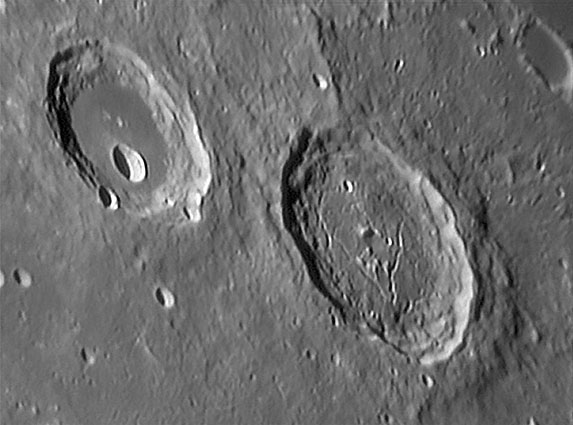September 5, 2004
Lunar Super-Heroes
Image Credit: Cristian Fattinnanzi |
|
Lunar Super-Heroes The Olympics are over, but some Greek super heroes live forever. Two of the mightiest gods of ancient Greece were Atlas and Hercules. Atlas was so strong that he held the Earth and the heavens on his shoulders, and Hercules labored at so many trials (including holding the Earth for Atlas for awhile) that he would make the pentathlon look easy. On the Moon these heroes are still side by side. Atlas (87) and Hercules (69 km) started out as similar complex craters looking like Copernicus. Both maintain the scarp at their inner rim crest but have tired looking terraces which have lost their distinctiveness. The floors are where these heroic craters differ. Hercules is simple - mare basalts have flooded its interior, covering its original floor and central peaks except for some tiny nubbins. A more recent impact created the 13.8 km wide Hercules G on the south side of its floor. Atlas is more interesting but more difficult to see the features that make it so. Atlas is shallow and only the tops of its peaks are visible, but its floor is not lava covered. A family of mostly concentric rilles cut the floor and parts of the inner wall slopes. At high sun these two craters reveal more. The floor of Hercules is dark, as expected, but Atlas surprises with two dark halo craters - one on the northern inner wall and the other on the south wall. These are explosive volcanic deposits similar to those along the rilles of Alphonsus. Atlas is another floor-fractured crater. Technical Details: Related Links: Tomorrow's LPOD: Terrific Taruntius
|
Author & Editor: Technical Consultant: Contacte al Traductor: A service of: |
COMMENTS?
Register, and click on the Discussion tab at the top of the page.




